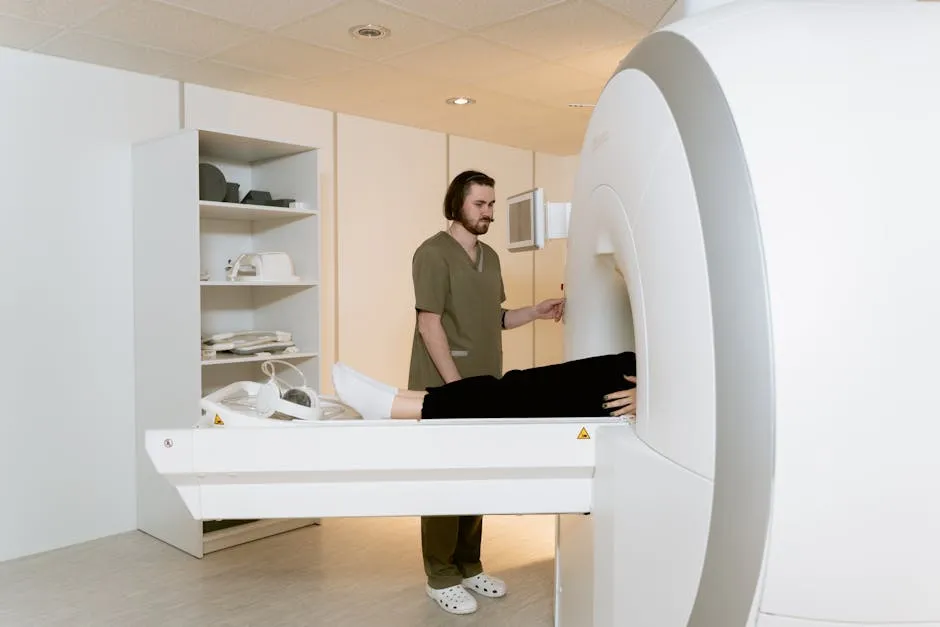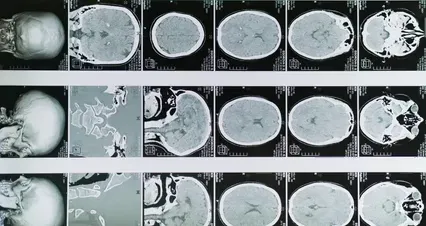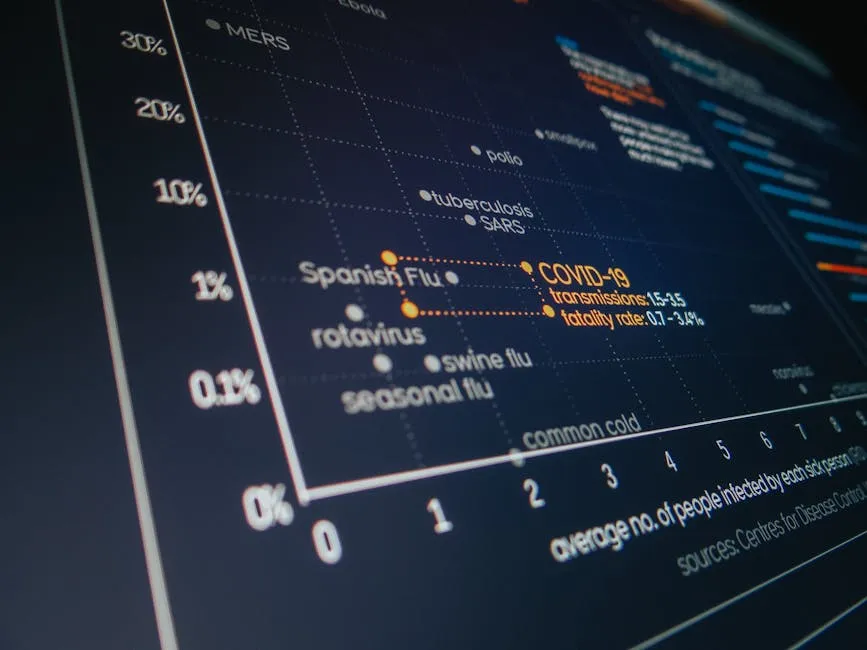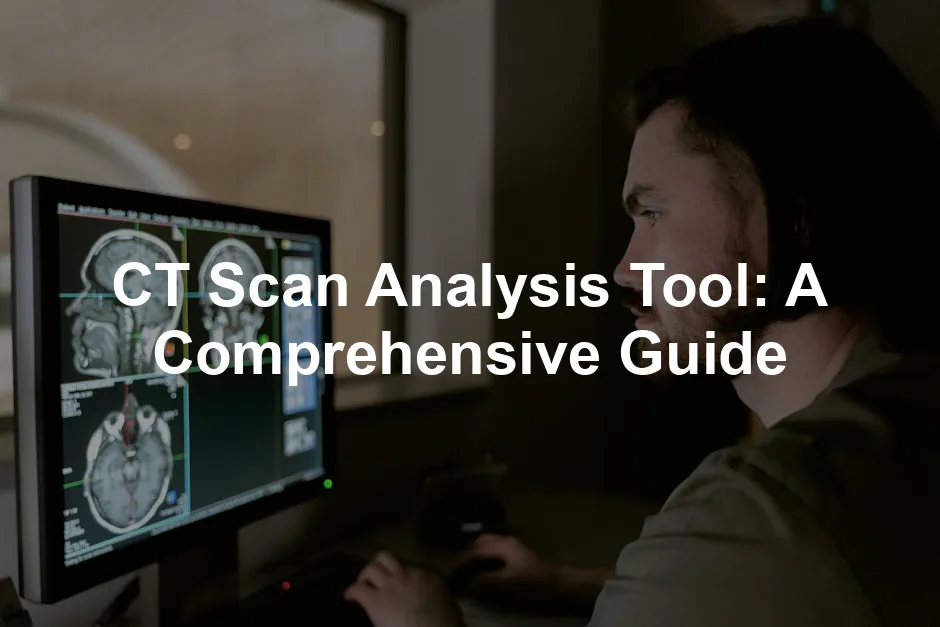Introduction
CT scan analysis tools are vital in many fields. They help professionals interpret complex data from scans effectively. As industries like healthcare, manufacturing, and research grow, the demand for advanced analysis software increases. This article will serve as a detailed guide on these essential tools.
Understanding the importance of these tools can be enhanced by exploring an introduction to statistical learning with python book length.
Summary and Overview
CT scan analysis tools facilitate data interpretation from scans. Their applications range from medical diagnostics to quality control in manufacturing. Selecting the right software based on your specific needs is crucial. Users can choose from various tools, including free and premium options. Look for common features such as 3D visualization, measurement capabilities, and defect detection. If you’re serious about your imaging game, you might want to check out the 3D Slicer Software. It’s like a Swiss Army knife for imaging, packed with features that can help you slice through data like a pro!
Understanding CT Scan Analysis Tools
What is a CT Scan Analysis Tool?
CT scan analysis tools process imaging data from X-ray scans. They transform 2D images into detailed 3D visualizations. This transformation allows users to understand intricate structures within scanned objects. These tools enhance our ability to analyze and measure internal features without damaging the original samples. They are crucial for applications like non-destructive testing and medical diagnostics, providing insights that traditional methods may overlook.Importance in Various Industries
CT scan analysis tools are essential across various fields. In healthcare, they enhance medical diagnostics, allowing doctors to detect diseases early. For example, these tools help radiologists identify tumors or internal injuries. In manufacturing, they ensure quality control by examining the integrity of products. They can reveal flaws in components that might be invisible to the naked eye. In research, CT analysis aids materials science by assessing internal structures. One significant advantage of CT scan analysis tools is their ability to perform non-destructive testing. This means they can analyze an object without causing any damage. For instance, in aerospace, engineers can inspect parts for defects without compromising their functionality. This capability ensures safety while saving time and costs in production and testing processes.
Types of CT Scan Analysis Tools
Commercial Software Options
When it comes to commercial software for CT analysis, several options stand out.-
Dragonfly by Object Research Systems
- Pros: User-friendly with AI segmentation tools.
- Cons: Limited dimensional analysis features.
- Pricing: Low to medium; free for non-commercial use.
-
VG STUDIO by Volume Graphics
- Pros: Excellent for dimensional analysis and metrology.
- Cons: Steep learning curve.
- Pricing: Medium to high; various licensing options.
-
I2S by DigiM Solutions
- Pros: Cloud-based solution for data management.
- Cons: Limited interface flexibility.
- Pricing: Medium; subscription-based.
-
AVIZO by Thermo Fisher
- Pros: Comprehensive analysis capabilities.
- Cons: Complex interface with a steep learning curve.
- Pricing: Medium to high; free trials available.
-
GeoDict by Math2Market
- Pros: Advanced simulation tools.
- Cons: Requires high skill level.
- Pricing: High; discounts for academics.

Free and Open-Source Tools
If you’re looking for budget-friendly options, several free and open-source tools are available.-
3D Slicer
- Features: Full 3D rendering capabilities; excellent for segmentation.
- Advantages: Large community support; versatile.
- Limitations: Can be slow with large datasets.
-
Fiji/ImageJ
- Features: Good for 2D image analysis; various plugins available.
- Advantages: Free and widely used in academia.
- Limitations: Limited 3D capabilities.
-
MeVisLab
- Features: Powerful node-based workflow for advanced image analysis.
- Advantages: High-quality rendering capabilities.
- Limitations: Steep learning curve and lacking documentation.


Key Features of CT Scan Analysis Tools
3D Visualization Capabilities
3D visualization plays a crucial role in CT analysis. It transforms flat images into detailed representations. This depth of detail helps users understand complex structures better. For instance, in healthcare, doctors can visualize tumors in three dimensions. In manufacturing, engineers can inspect intricate parts more effectively. Such visualization simplifies the analysis process and enhances decision-making.
Measurement and Defect Detection
CT scan analysis tools excel in measuring dimensions and detecting defects. They provide precise measurements of internal and external features. This capability is vital in industries like manufacturing, where accuracy is crucial. Automated defect detection enhances efficiency. For example, these tools can identify cracks or voids that may not be visible to the naked eye, ensuring product quality and safety.
Simulation and Modeling
Simulation and modeling are essential functions of CT scan analysis tools. They enable users to test various scenarios without physical prototypes. For example, in aerospace, engineers can simulate stress tests on components. In medical research, simulations help predict how drugs interact within the body. This capability accelerates development processes and reduces costs, making it invaluable across industries.
User Interface and Ease of Use
A user-friendly interface is key for effective CT scan analysis. Tools with intuitive designs help users navigate features easily. Common UI elements include drag-and-drop functionality and customizable dashboards. These features enhance the overall user experience, making it accessible even for beginners. A seamless interface encourages more professionals to adopt advanced CT analysis tools, maximizing their benefits.
How to Choose the Right CT Scan Analysis Tool
Assessing Your Needs
Choosing the right CT scan analysis tool starts with understanding your specific needs. What will you primarily use the software for? Different industries have unique requirements. For healthcare, look for tools that excel in medical imaging, such as tumor detection. In manufacturing, accuracy in defect detection may be crucial. Consider the type of data you will analyze and the features you need. Will you require 3D visualization or advanced measurement capabilities? Pinpointing these needs will guide you towards the best options.
Comparing Software Options
Once you know what you need, it’s time to compare available software. Create a comparison chart listing features, usability, and pricing. Many software providers offer trial versions or demos. Testing multiple tools can help you gauge their ease of use and functionality. This step is essential, especially if you’re new to CT analysis. Engaging with these demos can be like test-driving a car; it allows you to experience the interface and capabilities firsthand.
Budget Considerations
Budget is a significant factor in your decision-making process. Prices for CT scan analysis tools can vary widely. Consider not just the upfront costs but also ongoing expenses, like subscription fees. It’s essential to balance features with cost. Sometimes, investing a bit more upfront can save you money in the long run. Evaluate which features are essential and which ones you can compromise on. This strategy ensures you get the best value for your investment.
Future Trends in CT Scan Analysis Tools
Advancements in AI and Machine Learning
Artificial intelligence is revolutionizing CT scan analysis tools. AI can enhance the accuracy of defect detection and streamline data processing. Many tools now incorporate machine learning algorithms for improved analysis. For example, some software can automatically segment images, significantly speeding up workflows. This integration not only saves time but also reduces the potential for human error. As AI continues to evolve, expect even more innovative features in future CT analysis software.
Cloud-Based Solutions
Cloud-based analysis solutions are gaining popularity in the CT scan industry. They offer flexibility and accessibility, allowing users to access data from anywhere. Imagine being able to analyze scans from your office, home, or even on the go! This convenience fosters collaboration among team members, even if they are in different locations. In a cloud environment, multiple users can work on the same dataset simultaneously. This capability enhances teamwork and speeds up decision-making processes. Sharing insights is easier than ever, as team members can access updated information in real time. Cloud solutions not only improve accessibility but also streamline workflows, making them a game-changer for many organizations.
Integration with Other Technologies
Integration is a key feature of modern CT scan analysis tools. These tools can connect seamlessly with other imaging and data analysis technologies. This interconnectivity enhances workflow efficiency and simplifies data management. For instance, CT scan analysis tools can integrate with AI and machine learning systems. This collaboration improves diagnostic accuracy and reduces analysis time. Additionally, combining data from various sources leads to more comprehensive insights. Ultimately, this integration helps organizations make informed decisions faster, leading to better outcomes across various applications.Conclusion
Choosing the right CT scan analysis tool is crucial for success in any field. Assessing your specific needs will guide you in exploring available options. Remember, advancements in technology continue to enhance analysis capabilities. Stay informed about new tools and features to ensure you’re utilizing the best solutions for your requirements.FAQs
What is a CT scan analysis tool used for?
CT scan analysis tools help interpret imaging data for medical diagnostics, quality control, and research applications. They enhance understanding of complex structures and improve measurement accuracy.
Are there free options available for CT scan analysis?
Yes, there are free tools like 3D Slicer and Fiji/ImageJ. These options offer various functionalities, though they may have limitations compared to commercial software.
How do I choose the best CT scan analysis software for my needs?
Consider factors like your specific application, usability, features, and budget. Look for demo versions to test software before making a commitment.
What industries benefit from CT scan analysis tools?
Industries such as healthcare, manufacturing, aerospace, and research extensively use CT scan analysis tools for diagnostics, quality assurance, and materials evaluation.
Can CT scan analysis tools integrate with other software?
Yes, many CT scan analysis tools can integrate with imaging software, AI systems, and data management platforms to enhance workflow and data analysis.
How does AI enhance CT scan analysis?
AI improves analysis accuracy and efficiency by automating tasks such as data segmentation and defect identification, significantly speeding up the analysis process.
What should I look for in a CT scan analysis tool?
Consider features like 3D visualization, measurement capabilities, user interface, and integration options when selecting a tool. A user-friendly interface can make a big difference in your experience.
Please let us know what you think about our content by leaving a comment down below!
Thank you for reading till here 🙂
All images from Pexels




